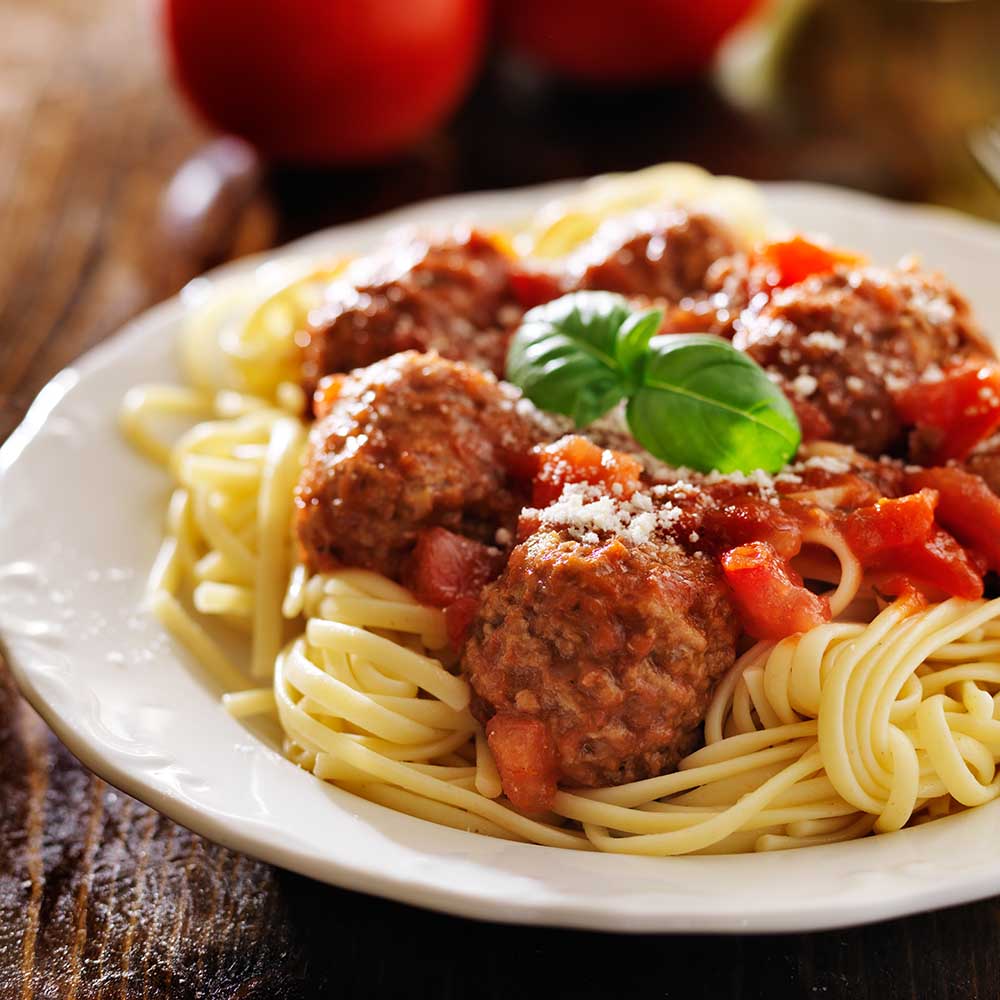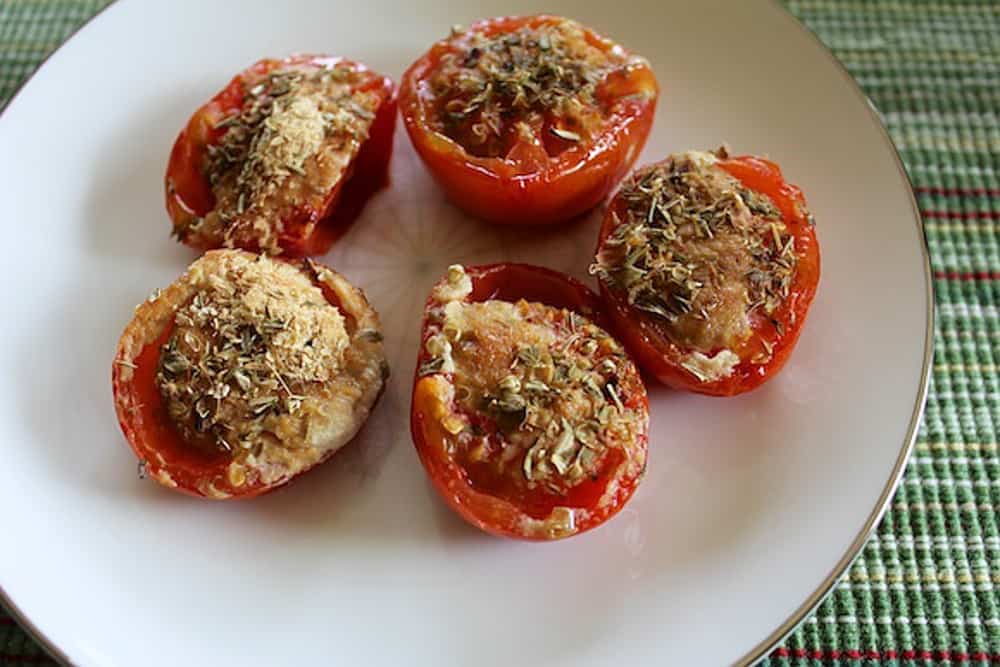Meatballs have long been a staple in various cuisines around the world. These delicious, savory spheres of ground meat mixed with flavorful ingredients are loved by many. The key to creating perfectly textured meatballs lies in the binding agent used in the recipe. Traditionally, eggs have been the go-to ingredient for achieving the desired cohesion and structure. However, for those with dietary restrictions or allergies, eggs may not be an option.
In recent years, the demand for egg substitutes has grown exponentially, driven by the increasing number of people adopting vegan or vegetarian lifestyles, as well as those with egg allergies or dietary preferences. This blog post aims to explore the world of egg substitutes for meatballs, providing you with a comprehensive guide on how to create delectable meatballs without using eggs.
The use of egg substitutes in meatball recipes offers a range of benefits. Not only do these alternatives cater to different dietary needs, but they also allow for creativity in the kitchen. By experimenting with various substitutes, you can discover unique flavors and textures that can elevate your meatball game to new heights.
Throughout this blog post, we will delve into the intricacies of egg substitutes for meatballs. We will discuss the reasons why egg substitutes are necessary, explore different types of substitutes available in the market, and provide detailed instructions on how to use them effectively. Whether you follow a vegan lifestyle, have egg allergies, or simply want to try something different, this guide will equip you with the knowledge and techniques to create mouthwatering meatballs without compromising on taste or texture.
So, are you ready to embark on this culinary journey? Let’s dive in and explore the world of egg substitutes for meatballs!
Understanding Egg Substitutes
Eggs play a crucial role in meatball recipes, acting as a binding agent that helps hold the ingredients together. However, there are several reasons why individuals may need to find suitable alternatives to eggs. Some people follow a vegan lifestyle, avoiding any animal-derived ingredients, while others have allergies or dietary restrictions that prevent them from consuming eggs. Whatever the reason may be, there is a wide range of egg substitutes available to meet these needs.
Common Dietary Restrictions and Allergies Related to Eggs
Eggs are one of the most common food allergens, and many individuals experience adverse reactions when consuming them. Symptoms can range from mild to severe and may include hives, digestive issues, or even anaphylaxis in extreme cases. For those with egg allergies, finding suitable egg substitutes is essential to avoid any allergic reactions.
Additionally, some people choose to follow specific diets that exclude eggs. Vegans, for example, abstain from consuming any animal products, including eggs. Others may follow a vegetarian diet that allows for dairy consumption but excludes eggs. By understanding these dietary restrictions and allergies, we can explore egg substitutes that cater to these specific needs.
Benefits and Drawbacks of Using Egg Substitutes
Using egg substitutes in meatball recipes offers a multitude of benefits. Firstly, it allows individuals with dietary restrictions or allergies to enjoy the flavors and textures of meatballs without compromising their health or beliefs. Secondly, egg substitutes open up a world of culinary possibilities, allowing for creativity and experimentation in the kitchen. By exploring different substitutes, you can discover unique flavors and textures that can enhance your meatball recipes.
However, it’s important to note that while egg substitutes can be highly effective, they may also have some drawbacks. Eggs provide not only binding properties but also moisture and richness to meatball recipes. Some substitutes may not replicate these characteristics perfectly, resulting in slight differences in taste and texture. However, with proper guidance and techniques, you can achieve satisfying results that come close to the original.
Types of Egg Substitutes Available in the Market
When it comes to egg substitutes, there is a wide array of options available in the market. These substitutes can be categorized into three main groups: commercial egg replacements, plant-based alternatives, and dairy-based substitutes.
- Commercial Egg Replacements: Several brands offer commercial egg replacements specifically formulated to mimic the binding properties of eggs. These products are typically made from a combination of starches, leavening agents, and other ingredients that provide structure and cohesion to recipes. One popular commercial egg replacement is Ener-G Egg Replacer, which is made from potato starch, tapioca flour, and leavening agents.
- Plant-Based Alternatives: Plant-based alternatives are often used as egg substitutes in vegan baking and cooking. Flaxseed meal, chia seeds, and applesauce are some of the common plant-based options. Flaxseed meal can be mixed with water to create a gel-like consistency that acts as a binding agent. Chia seeds, when mixed with water, also form a gel that can be used as a substitute. Applesauce, on the other hand, adds moisture and helps bind the ingredients together.
- Dairy-Based Substitutes: In some cases, dairy-based products can be used as alternatives to eggs. Yogurt and buttermilk, for example, can provide moisture and assist in binding the meatball mixture. These substitutes are particularly useful for individuals who can tolerate dairy but need to avoid eggs.
Suitability of Each Substitute for Meatball Recipes
When choosing an egg substitute for meatballs, it’s essential to consider the specific requirements of the recipe. The suitability of each substitute may vary depending on factors such as the type of meat used, desired texture, and flavor profile. Some substitutes, like flaxseed gel or chia gel, work well with most meatball recipes and can provide excellent binding properties. Others, such as applesauce or dairy-based substitutes, may offer different characteristics that can influence the final outcome.
In the next sections of this blog post, we will explore each egg substitute in detail, providing you with step-by-step instructions, measurements, and tips to achieve the best results in your meatball creations. So, let’s dive into the world of egg substitutes for meatballs and discover the incredible possibilities they offer!
Using Flaxseed Meal as an Egg Substitute
Flaxseed meal, derived from ground flaxseeds, is a versatile ingredient that can effectively replace eggs in meatball recipes. When mixed with water, flaxseed meal forms a gel-like substance that mimics the binding properties of eggs. This gel provides structure and cohesion to the meatball mixture, resulting in well-formed and cohesive meatballs.
To make flaxseed gel, simply combine ground flaxseeds with water in a ratio of 1 tablespoon of flaxseed meal to 3 tablespoons of water. Allow the mixture to sit for a few minutes until it thickens and develops a gel-like consistency. This flaxseed gel can then be incorporated into your meatball mixture as a substitute for eggs.
When using flaxseed gel as an egg substitute, it is important to follow proper measurements and ratios to achieve the desired results. Too much or too little flaxseed gel can affect the texture and flavor of the meatballs. Additionally, it’s important to note that flaxseed gel may impart a slightly nutty flavor to the meatballs, which can be a delicious addition or may need to be considered when pairing with other ingredients.
We recommend using the flaxseed gel in a 1:1 ratio as a direct replacement for eggs in your meatball recipe. However, it’s always a good idea to start with a smaller batch and adjust the quantity to suit your personal taste and preferences. By experimenting and fine-tuning the amount of flaxseed gel, you can achieve the desired texture and flavor in your meatballs.
Exploring Chia Seeds as a Binding Agent
Chia seeds, known for their nutritional benefits, can also serve as an excellent egg substitute in meatball recipes. Similar to flaxseed gel, chia seeds can be mixed with water to form a gel-like consistency that provides the necessary binding properties. Chia gel helps hold the ingredients together, resulting in well-formed and cohesive meatballs.
To make chia gel, combine 1 tablespoon of chia seeds with 3 tablespoons of water. Allow the mixture to sit for about 10-15 minutes until it thickens and forms a gel-like texture. This chia gel can then be used as a substitute for eggs in your meatball recipe.
When using chia gel as an egg substitute, it’s important to note that chia seeds have a mild nutty flavor that can enhance the overall taste of the meatballs. However, this flavor may not be desirable in certain flavor profiles. If you prefer a more neutral taste, you can experiment with using white or black chia seeds, as their flavors can vary slightly.
Similar to flaxseed gel, the recommended ratio for using chia gel as an egg substitute in meatball recipes is 1:1. However, it’s always a good idea to adjust the quantity to suit your personal preference. By experimenting with different amounts of chia gel, you can achieve the desired texture and flavor in your meatballs.
Using Applesauce as an Alternative to Eggs
Applesauce, a commonly used ingredient in baking, can also be used as an egg substitute in meatball recipes. Its natural sweetness and moisture content provide a unique flavor profile while helping to bind the ingredients together.
When using applesauce as an egg substitute, it’s important to consider the moisture content of your meatball mixture. Applesauce adds moisture, so you may need to adjust the other ingredients accordingly. It’s recommended to start by substituting each egg with ¼ cup of applesauce. However, if the mixture becomes too wet, you can balance it by adding additional breadcrumbs or other binding ingredients.
In addition to its binding properties, the natural sweetness of applesauce can complement certain flavor profiles, such as those with hints of cinnamon or other warm spices. However, if you prefer a more neutral flavor, you may want to opt for unsweetened applesauce.
Using applesauce as an egg substitute in meatball recipes offers a unique twist, adding a touch of sweetness and moisture to the final dish. It’s important to experiment with different ratios and adjust the other ingredients as needed to achieve the desired texture and flavor.
Exploring Other Potential Egg Substitutes
In addition to flaxseed meal, chia seeds, and applesauce, there are several other creative alternatives that can be used as egg substitutes in meatball recipes. Yogurt and buttermilk, for example, can provide moisture and binding properties while adding a tangy flavor profile to the meatballs. Tofu can be an excellent substitute for vegetarian meatball recipes, offering a versatile texture and the ability to absorb flavors. Other options include mashed bananas or pumpkin puree, which can add unique flavors and textures to your meatballs.
Each of these alternatives brings its own characteristics to the table, so it’s important to consider the specific requirements of your recipe and personal preferences. By experimenting with different substitutes, you can discover new and exciting flavors while meeting your dietary needs.

Comparing the Results and Characteristics of Different Egg Substitutes
When using egg substitutes in meatball recipes, it’s important to consider how they may affect the final outcome. While these substitutes can effectively bind the ingredients together, they may result in slight differences in texture, flavor, and appearance compared to traditional meatballs made with eggs.
The texture of meatballs made with egg substitutes may be slightly different, depending on the substitute used. Flaxseed gel and chia gel, for example, can provide a similar texture to meatballs made with eggs, while applesauce may add a touch of softness and moisture. Dairy-based substitutes like yogurt and buttermilk can also contribute to a tender texture.
Flavor-wise, each substitute brings its own unique taste to the meatballs. Flaxseed gel and chia gel may add a nutty undertone, which can complement certain flavor profiles. Applesauce can impart a subtle sweetness, while dairy-based substitutes can contribute a tangy note. It’s important to consider these flavor variations when pairing your meatballs with sauces or other ingredients.
In terms of appearance, meatballs made with egg substitutes may have a slightly different color compared to those made with eggs. This is particularly noticeable when using flaxseed or chia gel, as they can darken the meatball mixture slightly. However, once cooked, the differences in appearance are minimal.
It’s important to note that the amount of egg substitute used, as well as the cooking time and temperature, may need to be adjusted to achieve optimal results. Each substitute has its own characteristics, so it’s essential to experiment and find the right balance for your specific recipe and preferences.
Tips for Using Egg Substitutes in Meatball Recipes
Now that we have explored the various egg substitutes available for meatball recipes, it’s time to delve into some helpful tips and techniques to ensure successful results when using these substitutes. Using egg substitutes requires a slightly different approach than traditional recipes that include eggs. By following these tips, you can achieve the desired texture, flavor, and appearance in your meatballs.
Understanding the Role of Egg Substitutes in Maintaining Meatball Texture and Structure
Eggs play a vital role in meatball recipes, providing structure and cohesion to the mixture. When using egg substitutes, it’s important to understand how each substitute contributes to the texture and structure of the meatballs. Some substitutes, like flaxseed gel and chia gel, provide similar binding properties to eggs, resulting in well-formed meatballs. Others, such as applesauce or dairy-based substitutes, may add moisture and tenderness to the final product.
To achieve the desired texture and structure, it’s important to choose the right egg substitute based on your preferences and dietary needs. Consider the specific characteristics and attributes of each substitute and how they align with your desired outcome. By understanding the role of egg substitutes in maintaining meatball texture and structure, you can make informed choices and adapt your recipe accordingly.
Proper Incorporation Techniques for Egg Substitutes in Meatball Mixtures
When incorporating egg substitutes into your meatball mixture, it’s essential to follow proper techniques to ensure even distribution and optimal binding. Unlike eggs, which can be easily mixed into the meatball mixture, some substitutes, like flaxseed gel or chia gel, may require additional care during incorporation.
To ensure proper incorporation, start by adding the egg substitute to the meatball mixture gradually. Mix it in slowly, ensuring that it is evenly distributed throughout the mixture. This will help prevent any clumping or uneven binding. If using flaxseed gel or chia gel, you may need to give the mixture a few extra minutes to allow the gel to fully hydrate and bind with the other ingredients.
Additionally, it’s important to avoid overmixing the meatball mixture once the egg substitute has been added. Overmixing can lead to a denser texture and tough meatballs. Mix the ingredients just until they are combined, being careful not to overwork the mixture.
Adjusting Other Ingredients to Compensate for the Absence of Eggs
Eggs not only provide binding properties but also contribute to the moisture and richness of meatball recipes. When using egg substitutes, it’s important to consider how their absence may affect the overall moisture content and flavor of the meatballs. Adjusting other ingredients can help compensate for any potential differences.
If your meatball mixture appears too dry after incorporating the egg substitute, you can add additional moisture by including ingredients like breadcrumbs, grated vegetables, or a small amount of liquid such as broth or tomato sauce. These additions will help maintain the moisture and prevent the meatballs from becoming dry or crumbly.
On the other hand, if the meatball mixture becomes too wet or sticky, you can balance it out by adding more binding ingredients such as breadcrumbs or ground oats. These ingredients will help absorb excess moisture and improve the texture of the meatballs.
Be mindful of the overall flavor profile when adjusting other ingredients. For example, if you’re using a sweet substitute like applesauce, you may want to reduce the amount of added sugar or adjust the seasoning accordingly. Consider the taste of the substitute and its impact on the overall flavor of the meatballs.
Addressing Potential Challenges and Troubleshooting Tips
Using egg substitutes in meatball recipes may present some challenges, particularly if you’re new to the process. Here are a few troubleshooting tips to help you overcome common issues:
- If the meatballs are too crumbly or falling apart, it may be due to insufficient binding. In such cases, try adjusting the ratio of the egg substitute or adding additional binding ingredients such as breadcrumbs or ground oats.
- If the meatballs are too dense or heavy, it could be a result of overmixing the meatball mixture. Avoid overworking the mixture and mix just until the ingredients are combined.
- If the meatballs are too wet or sticky, it may be due to excess moisture in the mixture. Adjust the amount of liquid or binding ingredients to achieve the desired consistency.
Final Thoughts
Throughout this blog post, we have explored the fascinating world of egg substitutes for meatballs. These substitutes offer a wide range of options for individuals with dietary restrictions or allergies, as well as those who simply want to experiment with different ingredients. Whether you choose flaxseed gel, chia gel, applesauce, or other alternatives, the key is to find the right substitute that aligns with your taste preferences and dietary needs.
By understanding the reasons for using egg substitutes, exploring the types of substitutes available, and learning how to incorporate them effectively into meatball recipes, you can create delicious and satisfying meatballs without compromising on taste or texture. Each substitute brings its own unique characteristics, adding a touch of creativity and versatility to your culinary repertoire.
As you embark on your egg substitute journey, don’t be afraid to experiment and adjust the quantities and ratios to suit your personal preferences. Every individual has different tastes and dietary needs, so it’s important to find the combination that works best for you. Keep notes, be patient, and enjoy the process of discovering new flavors and textures in your meatballs.
We hope that this comprehensive guide has provided you with valuable insights and practical tips to create amazing meatballs using egg substitutes. Whether you follow a vegan lifestyle, have egg allergies, or simply want to try something different, you now have the knowledge and techniques to make meatballs that cater to your specific needs.
Now it’s your turn to get creative in the kitchen! We encourage you to explore different egg substitutes, experiment with flavors, and share your experiences with others. Feel free to adapt recipes, try new combinations, and make meatballs that are uniquely yours. The possibilities are endless, and the satisfaction of creating delicious meatballs without eggs is truly rewarding.
So, gather your ingredients, roll up your sleeves, and let the culinary adventure begin! We can’t wait to hear about your egg substitute meatball creations and the delightful flavors you discover along the way.
Remember, the joy of cooking lies in the exploration and experimentation. Embrace the versatility of egg substitutes and unlock the potential to create mouthwatering meatballs that cater to your specific dietary needs and preferences.
Happy cooking and enjoy your egg substitute meatballs!





